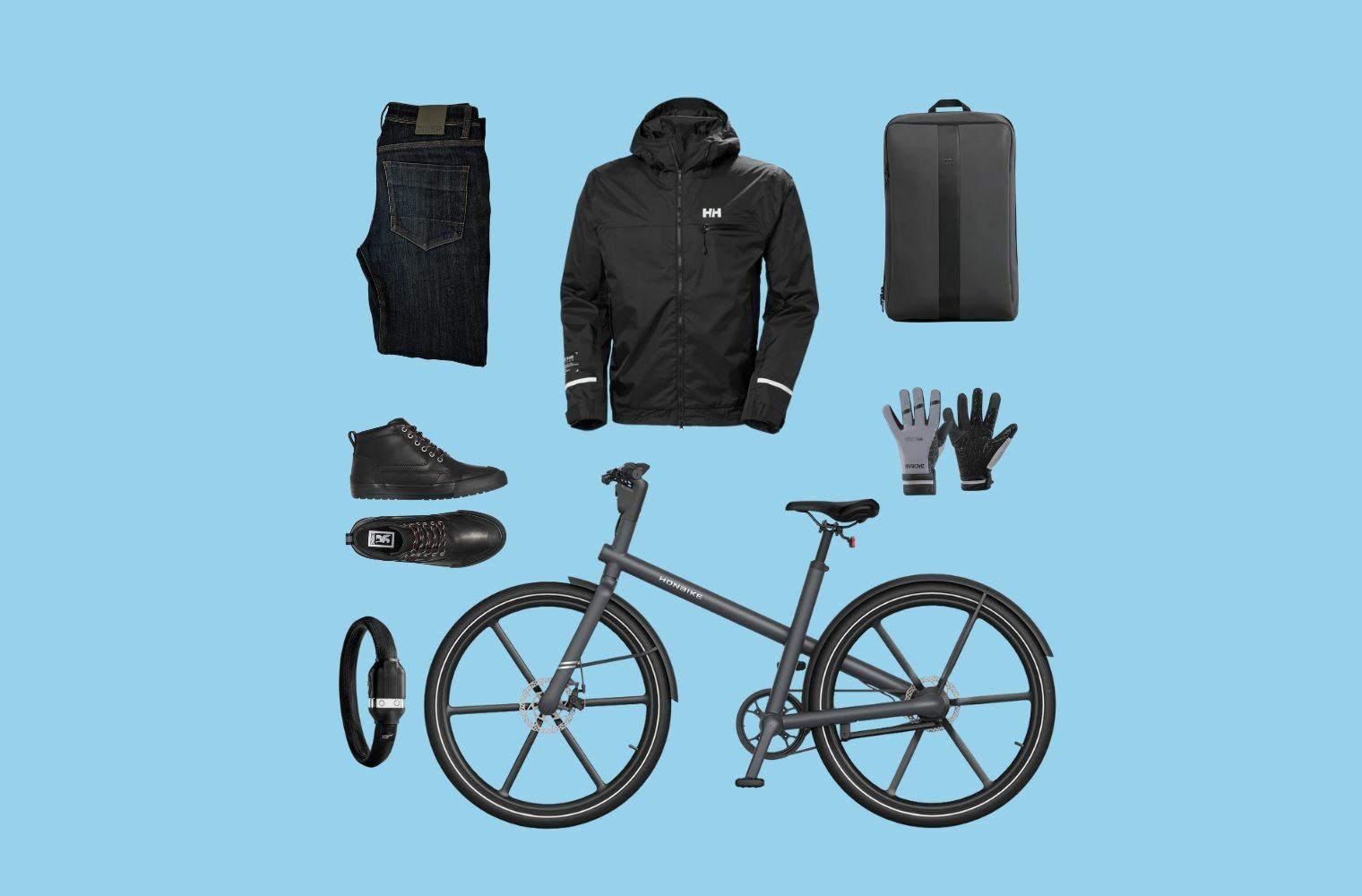This post may contain affiliate links, which help to keep Discerning Cyclist rolling. Learn more.
The Short Answer
Cyclists wear Lycra for its form-fitting, breathable, and aerodynamic properties. It reduces drag, enhances safety, and allows for a wide range of movement. However, wearing Lycra is not necessary for all types of cycling, and there are alternative clothing options for comfort and style.
It’s like a game of cyclist cliché bingo: a pricey road bike, a Strava subscription and an interest in speciality flat-whites. Add top-to-toe Lycra, and you’ve basically got a full card. The Middle-Aged Man in Lycra stereotype was invented in 2010, and fairly or unfairly, the term has hung around ever since.
But what exactly is Lycra and do you really need to wear it if you’re planning to get out on two wheels?

What is “Lycra”?
Lycra was invented in 1958 by chemist Joseph Shivers in Waynesboro, Virginia, USA. Originally marketed as a fabric for women’s lingerie, it gradually proved itself to be the ideal material for athletic wear. Its hallmarks are its elasticity, breathability and strength. For this reason, it is used in a diverse range of cycling products, including bike shorts, jerseys and skull caps.
Is Lycra and Spandex the Same?
Although consumers often mix up Lycra and Spandex, they’re actually the same thing. You can thank marketing for the confusion. Spandex is an American term – a simple anagram of the word “expands” – whereas LYCRA is a brand found throughout the UK, Australia and Ireland.
In Continental Europe, the material goes by variants of the name ‘elastane’. Think ‘elastano’ in Spain and ‘élasthanne’ in France.
Why Do Cyclists Wear Lycra?
If you want to know why the material’s so ubiquitous in sportswear, look to France. The French ski team pioneered its use at the 1968 Winter Olympics in Grenoble, when they wore Lycra ski suits to compete. Thanks to its lightweight nature, it was quickly adopted by cycle brands who used it to construct mid-length shorts.
Now, Lycra can be found readily throughout the bike world. It is favoured because it is both form-fitting and breathable. It allows for airflow and wicks away sweat from the body. This means you don’t arrive at your destination with unsightly sweat patches under the armpits.
Lycra is also incredibly elastic and permits a very wide range of movement. It’s perfect for cycling at a high cadence, or on tough downhill slopes.
Why Do Cyclists Wear Tight Clothes?
The motivation behind wearing tight clothes is two-fold: streamlining and safety. The main thing that slows cyclists down is drag. If the wind catches in your clothes, it acts like a kite or sail, creating air friction and decelerating you dramatically.
The reason that cyclists wear Lycra is essentially the same reason they cycle in a peloton. The cyclist ahead of them reduces the amount of air “catching” on their bodies, like a human windbreaker.
On a safety level, tight clothing is very important. If you wear anything too baggy, it can easily become caught in the spokes of your wheel, jamming your bike and potentially sending you crashing onto the tarmac.

Lycra Pros and Cons
Lycra is somewhat controversial in the cycling world. Its supporters praise its elasticity and durability. It can withstand hundreds of rides and hundreds of washes, as well as a range of weather conditions. It’s also a boon for bike brands. It takes alkaline and acid treatments with ease, meaning it can be customised and printed as much as you like.
Critics, on the other hand, feel that the full Lycra look makes cycling into an exclusive sport – the reserve of those who can access all the “right” kit and gear. With its often garish colours, it’s also off-putting for the image-conscious, and fits rarely take into account the needs of all riders, including cyclists with physical disabilities.
Then, there’s the issue of sustainability. The production of synthetic fibres consumes 1.35% of the world’s oil resources, which is more than the oil consumption of Spain as a whole. It’s also rarely recycled – once worn out, it ends up in landfill. Couple this with the fact that the toxic dyes used in its production also leak into precious marine habitats and you can see why it proves problematic.
Do You Need to Wear Lycra When Cycling?
It depends. If you’re thinking of tackling steep summits, or fundraising in a charity ride like the London to Brighton, then a Lycra bib and jersey is probably a good shout. They’ll keep you cool and allow you a far wider breadth of motion than is possible in natural fibres, like wool or cotton.
Planning on a leisurely commute though? There’s really no need. It’s highly unlikely you’ll sweat or get hot enough to benefit for the cooling effects of the fabric. And so, as long as your clothes aren’t loose enough to catch in your bike, you’ll be more than ready to hit the cycle paths in a pair of jeans and t-shirt. If you don’t believe us, just check out the cycling culture of the Netherlands, where cycling is done in all kinds of get-ups.
Indeed, some even argue that wearing Lycra is detrimental to the accessibility of cycling as it comes across as an elitist sport that requires expensive equipment rather than the most accessible most of transport ever created.

Lycra Alternatives
Here at Discerning Cyclist, we’re excited to show readers that the Lycra “look” is not a mandatory part of enjoying life on a bike. There are plenty of stylish brands dedicated to urban cycling, formulated to fuse the technical benefits of specialised gear with the look of everyday clothing.
Rapha are a market leader in this regard, and it’s hard to find a clued-up commuter who wouldn’t recommend their slick, understated products. Popular manufacturers Endura also produce kit that wouldn’t look out of place slung over the back of an office chair. We especially recommend their Humvee reversible jacket that can take you from work to weekend rides with ease.
Otherwise, when it comes to Lycra alternatives, comfort is your only prerequisite. Wear a shirt or jacket too tight across the back and you might yourself struggling to reach your handlebars in the midst of busy traffic. You should aim to wear clothes that will allow you to move (and even sweat a little) without restricting your position on your bike.
It’s also worth considering fabrics that won’t crumple as you ride. There’s nothing worse than turning up to your destination looking like your wardrobe needs a little ironing TLC.
Perhaps most importantly, though, wear what you feel confident and safe in. Cycling is, above all, fun and your outfit should reflect that. Lycra, while a useful choice, is by no means the marker of a “real” or professional cyclist.










